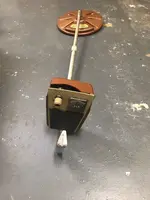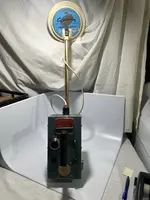For me, it really varies, depending on conditions and how I'm feeling that day. I've found gold rings in the dry, found them in the wet. I've found plenty of trash in the dry, but also find trash in the wet, usually pieces of iron or metal from boats/ships, all kinds of metal objects can wash up, the heavier the metal, the better the odd's it'll be in the wet. If I start finding fishing sinkers/weights in the wet, I'll stop and start a tight grid, because if heavy sinkers are there, other heavier objects like gold rings can be there as well.
If the tide is high, I'll work the dry, usually the towel line between lifeguard stations. Once the tide starts going out, I'll start at the top of the wet, work the wet parallel for a bit, then will turn around, and start working my way back a bit lower down on the second pass, following the tide as it goes out. That said, there are also times that I just don't feel like getting wet or may not have a lot of time to hunt, so I'll stay dry by hunting the dry, lol.
In my experience, there's usually less competition in the wet/water than on the dry, at least that used to be the case. Anyone with any type of metal detector can work the dry, but not all detectors can handle the wet/water. 10 years ago, I could pretty much count on being the only detectorist on the wet/water with my Minelab Sovereign, as it's a BBS SMF detector, like the Excalibur, and can handle the wet/water. But nowadays, every manufacturer has a slew of SMF detectors in their lineup, so more and more detectorists now have the capability of working the wet/water. Not all want to get wet, and experience counts, but chances are good that at least they have a detector that can handle the wet/water.
Lastly, targets in dry sand can be located all over the place, sometimes there's no rhyme or reason as to where they're found. But working the towel line at least increases the chance of finds due to the heavier concentration of people located in a specific row. But in the wet sand, you can start to see clues and find a target line. For instance, I find a quarter, then keep walking parallel to the beach and find another quarter/coin, walk a bit more, find another coin. Once you find a few coins or targets in the wet, look back to see the previous holes you dug, and you'll typically see that all/most of the holes are in a fairly straight line. That indicates that targets of that specific size and weight should be located in the wet in that general vicinity. You may find pennies at the high tide line/start of the dry, further down the wet you might start finding nickels, further down some more and you might start hitting quarters. Lighter objects tend to get pushed up higher, heavier objects tend to stay closer to the water in the wet, not always, but just a general observation.




